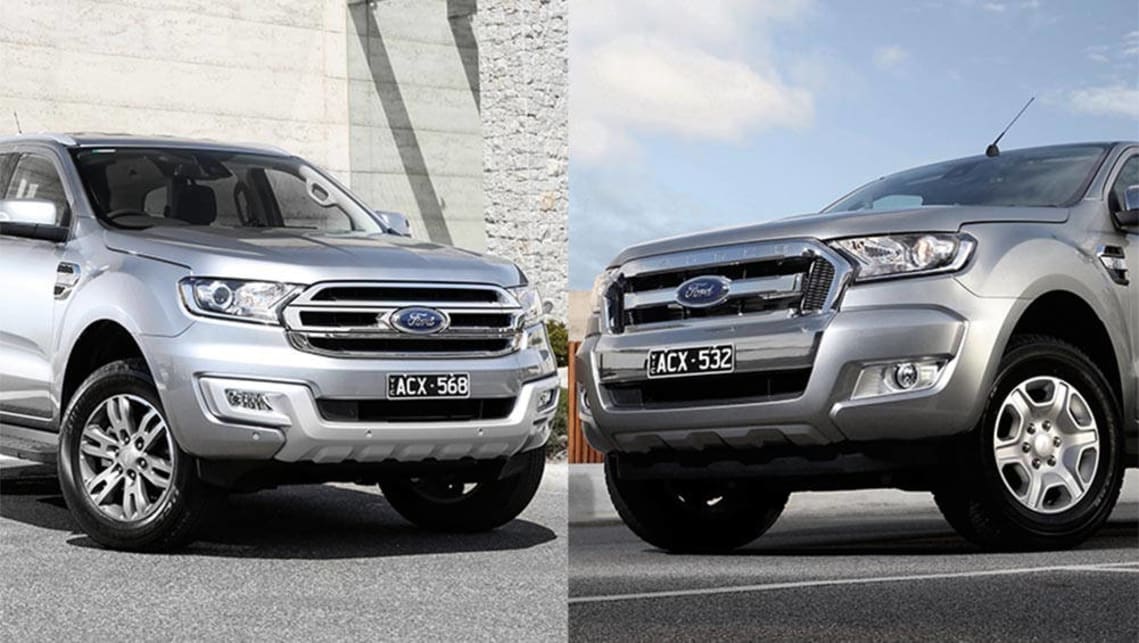
Skoda Fabia vs Mazda 2
It's a baby hatch match, playing sportiness against cuteness. Then, says Craig...
Browse over 9,000 car reviews

This SUV and ute are twins under the skin, but which one is better value? Joshua Dowling adjudicates.
value
Ford Everest Trend
$66,303 drive-away
Other seven-seat 4WDs start at $45,000, so at $66,303 drive-away the Ford Everest Trend is steep. The most affordable version, the Everest Ambiente, costs $60,000 drive-away and is bare bones basic. A tow pack and built-in navigation are standard on the Ranger XLT ute but $1000 and $600 options respectively on the Everest Trend (included in our drive-away price).
Ford Ranger XLT
$62,838 drive-away
The Ford Ranger isn’t cheap either, priced between $5000 and $8000 above equivalent utes from other brands. But it’s cheaper than an Everest, even once options such as a rear camera, radar cruise control, lane keeping and crash alert (an $1100 pack) are added. Auto adds $2310, which brings our “as tested” price to $62,838 drive-away.
design
Ford Everest Trend
These two are common from the front doors forward (albeit with unique grilles), but the Everest is easier to park: it’s 46cm shorter and has a one metre tighter turning circle (11.7 metres) because there is less distance between the front and rear wheels. And yet the Everest can carry seven (two littlies in the back row), the Ranger only seats five.
Ford Ranger XLT
The Ranger XLT might be a workhorse (it can tow 3500kg versus 3000kg for the Everest) but it feels more stable and secure on the road than the Everest. If I had to choose one to drive on a getaway, or all day every day, it would be the Ranger XLT. Room for improvement? It needs better brakes.
technology
Ford Everest Trend
Engine
Both share the same 3.2-litre five-cylinder turbo diesel, a strong engine muted with noise deadening behind the dashboard and other refinements. Oddly, the Everest misses out on a few kilowatts to the Ranger (143kW versus 147kW) but torque is the same (470Nm). Auto adds $2310 to the Ranger but is standard on the Everest.
Ford Ranger XLT
Engine
The 3.2-litre five-cylinder turbo diesel is the biggest and best in the ute business. It uses slightly more fuel than the others but it’s still remarkably economical for such a big truck. Earlier Ranger’s sounded like a tractor but welcome refinements were introduced with this model.
safety
Ford Everest Trend
Six airbags and a five-star safety rating. The “curtain” airbags cover the side glass all the way to the third row. Radar cruise control, lane keeping and crash alert are standard on the Everest Trend, as are front and rear sensors and a rear camera. The same cannot be said of the Ranger XLT…
Ford Ranger XLT
Six airbags and a five-star rating, but … Ford needs to go to the naughty corner for making a rear view camera optional in 2016 on a $60,000-plus vehicle (a rear camera is standard on a $14,990 Honda Jazz, so what’s Ford’s excuse?). The factory-fitted Ranger camera is part of an $1100 option pack, but it includes technology not available on other utes (radar cruise control, lane keeping and crash alert).
driving
Ford Everest Trend
The Everest has a softer and more luxurious ride than the Ranger, but this means the suspension can feel floaty and less planted on the road. This is the trade-off for genuine off-road ability. Don’t expect the Everest to corner with the same precision as a Ford Territory.
Ford Ranger XLT
The Ranger XLT might be a workhorse (it can tow 3500kg versus 3000kg for the Everest) but it feels more stable and secure on the road than the Everest. If I had to choose one to drive on a getaway, or all day every day, it would be the Ranger XLT. Room for improvement? It needs better brakes.
Verdict
Ford Everest Trend
Ford Ranger XLT
The Ford Ranger is the better drive and the better buy -- it’s cheaper even once options are added -- and can tow and carry more. Unless, of course, you need seven seats.
Comments